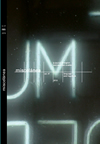The Theme of the Shattered Self in Toni Morrison's The Bluest Eye and A Mercy
DOI:
https://doi.org/10.26754/ojs_misc/mj.20138832Palabras clave:
Identidad fragmentada, Negro, Traumatizado, Chivo expiatorio, ComunidadResumen
En su ficción, Toni Morrison ha tratado frecuentemente con individuos traumatizados, que suelen pertenecer a grupos minoritarios, especialmente de raza negra. La fragmentación del individuo y la búsqueda de identidad son temas omnipresentes en sus novelas. En The Bluest Eye y A Mercy, Morrison explora el pasaje a la madurez de dos adolescentes profundamente traumatizadas. Las comunidades victimizadas o aquellas bajo amenaza de violencia, tales como los Estados Unidos en su orígenes, discriminan y denigran a sus miembros más débiles. Así, Pecola y Sorrow son víctimas vulnerables de la opresión social, sus chivos expiatorios. En un estado crítico de su desarrollo psicológico, estas jóvenes convierten su psicosis en una estrategia para hacer frente y sobrevivir en un ambiente hostil.Descargas
Referencias
Awkward, Michael. 1988. “Roadblocks and Relatives: Critical Revision in Toni Morrison’s The Bluest Eye”. In McKay, N.Y. (ed.) Critical Essays on Toni Morrison. Boston: G. K. Hall & Co.: 57-68.
Barnett, Pamela E. 1998. “Figurations of Rape and the Supernatural in Beloved” [fragment]. In Plasa, C. (ed.) Toni Morrison: Beloved. New York: Columbia U.P.: 73-85.
Benedict, Helen E. 2008. “Bereavement in Children” . Accessed April 18, 2012.
Bloom, Harold. (ed.) 1990. Modern Critical Views Toni Morrison. New York and Philadelphia: Chelsea House Publishers.
Brothers, Doris. 1995. Falling Backwards: An Exploration of Trust and Self-Experience. New York: Norton.
Brown, Laura S. 1995. “Not Outside the Range: One Feminist Perspective on Psychic Trauma”. In Caruth, C. (ed.): 100-112.
Caruth, Cathy. (ed.) 1995. Trauma: Explorations in Memory. Baltimore: The Johns Hopkins U.P.
Caruth, Cathy. 1996. Unclaimed Experience: Trauma, Narrative, and History. Baltimore and London: The Johns Hopkins U.P.
Davis, Cynthia A. 1990. “Self, Society and Myth in Toni Morrison’s Fiction”. In Bloom, H. (ed.): 7-25.
Dixon, Melvin. 1990. “Like an Eagle in the Air: Toni Morrison”. In Bloom, H. (ed.): 115-142.
Earle, Kathryn. 1997. “Teaching Controversy: The Bluest Eye in the Multicultural Classroom”. In McKay, N.Y. and K. Earle (eds.) Approaches to Teaching the Novels of Toni Morrison. New York, NY: MLA: 27-33.
Erikson, Kai. 1995. “Notes on Trauma and Community”. In Caruth, C. (ed.): 183-199.
Gallego-Durán, Mar. 2011. “Nobody Teaches You to Be a Woman: Female Identity, Community and Motherhood in Toni Morrison’s A Mercy”. In Stave, S. and J. Tally (eds.) Toni Morrison’s A Mercy. Critical Approaches. Newcastle: Cambridge Scholars Publishing: 103-118.
Grewal, Gurleen. 1997. “‘Laundering the Head of Whitewash’: Mimicry and Resistance in The Bluest Eye”. In McKay, N.Y. and K. Earle (eds.): 118-126.
Harris, Trudier. 1991. Fiction and Folklore: The Novels of Toni Morrison. Knoxville, TN: University of Tennessee Press.
Herman, Judith L. 1992. Trauma and Recovery: Aftermath of Violence—From Domestic Abuse to Political Terror. New York: Basic.
Hwangbo, Kyeong. 2004. Diss. Trauma, Narrative, and the Marginal Self in Selected Contemporary American Novels. University of Florida. <http://etd.fcla.edu/UF/UFE0007302/hwangbo_k.pdf>. Accessed March 6, 2012.
Janoff-Bulman, Ronnie. 1992. The Shattered Assumptions: Toward a New Psychology of Trauma. New York: Free Press.
Koolish, Lynda. 2001. “‘To be Loved and Cry Shame’: a Psychological Reading of Toni Morrison’s Beloved”. Melus 26 (4): 169-195.
Kristeva, Julia. 1982. Powers of Horror: An Essay on Abjection. New York: Columbia U.P.
Laing, Ronald. (1959) 1990. The Divided Self. New York: Penguin Books.
McKay, Nellie Y. (ed.) 1988. Critical Essays on Toni Morrison. Boston: G. K. Hall & Co. McKay, Nellie Y. and K. Earle. (eds.) 1997.
Approaches to Teaching the Novels of Toni Morrison. New York, NY: MLA. Miner, Madonne M. 1990. “Lady No Longer Sings the Blues: Rape, Madness, and Silence in The Bluest Eye”. In Bloom, H. (ed.): 85-100.
Morrison, Toni. 1970. The Bluest Eye. New York: Holt, Rinehart, and Winston.
—. 1990. “Unspeakable Things Unspoken: The Afro-American Presence in American Literature”. In Bloom, H. (ed.): 201-230.
—. 2008. A Mercy. New York: Alfred A Knopf.
Neumann, Erich. 1969. Depth Psychology and a New Ethic. New York: Putnam.
Pérez-Torres, Rafael. 1997. “Tracing and Erasing: Race and Pedagogy in The Bluest Eye”. In McKay, N.Y. and Earle, K. (ed.): 21-26.
Robins, Charles. 2003. New York Voices: The Trauma of 9/11. Madison: Psychosocial Press.
Spargo, R. Clifton. 2002. “Trauma and the Specters of Enslavement in Morrison’s Beloved”. Mosaic 35 (1). <http://www.geocities.com/tarbaby2007/beloved13.html> Accessed September 10, 2007.
Stave, Shirley and Justine Tally (eds.) 2011. Toni Morrison’s A Mercy. Critical Approaches. Newcastle: Cambridge Scholars Publishing.
Stepto, Robert. 1994. “Intimate Things in Place: A Conversation with Toni Morrison”. In Taylor-Guthrie, D. (ed.) Conversations with Toni Morrison. Jackson: Mississippi U.P.: 10-29.
Vallejo Alvarez, Magdalena. 1998. La identidad afroamericana y la victimización femenina en la narrativa de Toni Morrison. Madrid: Universidad Complutense.
Vega-González, Susana. 2011. “Orphanhood in Toni Morrison’s A Mercy”. In Stave, S. and J. Tally (eds.): 119-135.
Wardi, Anissa. 2011. “The Politics of ‘Home’ in A Mercy”. In Stave, S. and J. Tally. (eds.): 23-41.
Worden, J. W. 1996. Children and Grief: When a Parent Dies. New York, NY: The Guilford Press.
Descargas
Publicado
Número
Sección
Licencia

Esta obra está bajo una licencia internacional Creative Commons Atribución-NoComercial 4.0.


